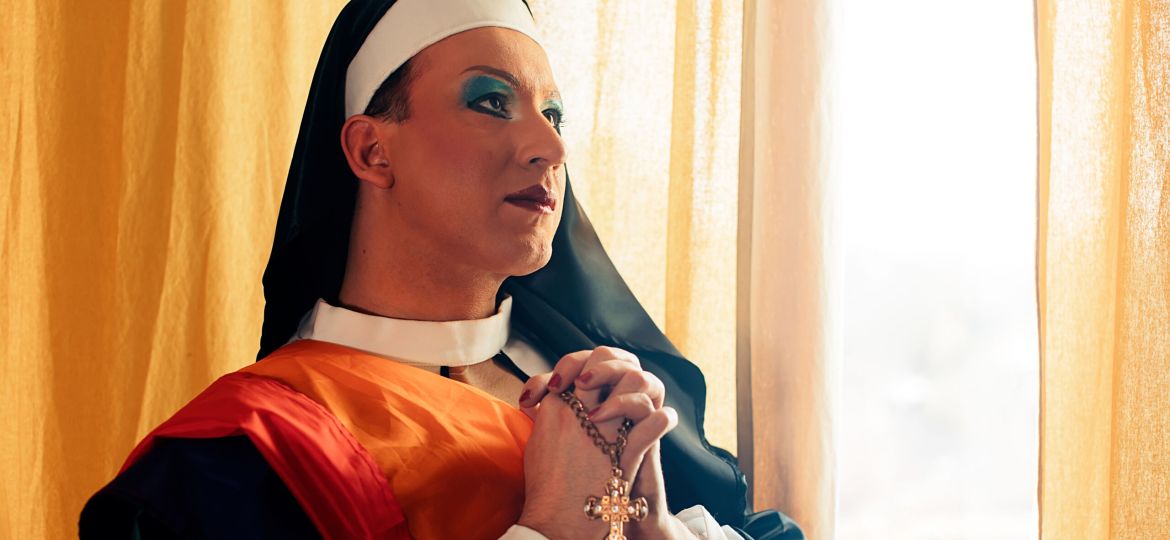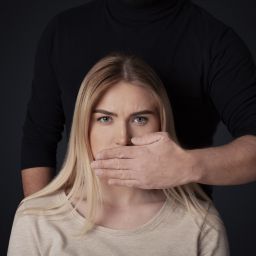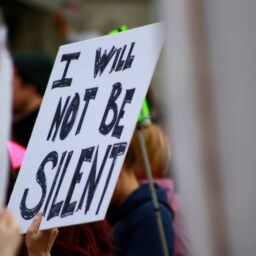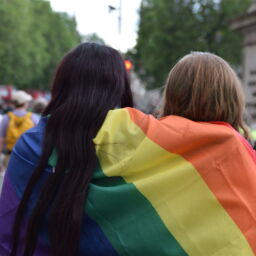
THE LGBTQ+ COMMUNITY AND RELIGIOUS ABUSE: TRAUMA UNSEEN
by- Amanda Hildreth
Religious organizations vary in their attitudes towards members of the LGBTQ+ community both in and outside their community. When a member of their religious community comes out, the response can range from full acceptance to total ostracization.
Many members of the LGBTQ+ community find a sense of well-being and support in affirming religious environments. However, many LGBTQ+ members also encounter negative experiences with religion that impact them long into the future after being a part of a disaffirming religious environment.
Spiritual Abuse and Trauma of the LGBTQ+ Community
Research shows that members of the LGBTQ+ community attending Evangelical Christian community churches are subject to Spiritual Abuse and suffer trauma (Barnes & Meyer, 2013; Cole & Harris, 2017, Gandy-Guedes et al., 2017, Gibbs & Goldbach, 2020). Religious trauma is the result of Spiritual Abuse and is defined as psychological damage resulting from religious messages, beliefs, or experiences (Stone, 2013).
Members of the LGBTQ+ community may experience several forms of spiritual trauma, including (Miriam Geiger, 2023):
- Being outed by parents or a peer to a religious leader without their consent, often with the intention of “saving” them or in hopes that they will change their sexuality or gender identity
- Being told you are responsible for unfortunate events such as sickness or accidents
- Religious-oriented conversion therapy or other interventions aimed at changing someone’s gender identity or sexuality
- Forced to be a part of religious rituals to eliminate someone’s gender identity or sexual orientation
- The belief that if you are LGBTQ+, it means you are possessed by demons or are the devil
- Telling you that you can’t serve in church leadership because of your gender identity
- Religious leaders refusing to officiate your wedding or acknowledge your marriage or relationship
Although the extreme examples of LGBTQ+ spiritual abuse are more visible, it is crucial to acknowledge that many individuals with religious trauma suffer silently for years, sometimes not realizing the effect it has on them (Miriam Geiger, 2023).
Signs of Spiritual Abuse
There are several signs of Spiritual Abuse including (Change, Inc. St. Louis Counseling, 2015):
- Questions about religious practices or beliefs are viewed as questions against authority
- All-or-nothing thinking
- Inequality against women, people of color, and LGBTQ+ persons
- Withdrawal of outsiders
- Contradictory actions and values
- Signs of confusion and dissent are seen as sinful or unacceptable
- Mental health or physical health issues are denied, regarded as sinful, or that person’s fault
- Religious seekers are guided by fear and shame
- Physical, Sexual, Emotional, or Verbal Abuse from leaders is ignored or condoned
Spiritual Abuse isn’t limited to a specific religion or religious leaders. Any person of any belief or religion is able to perpetrate Spiritual Abuse. Signs of Spiritual Abuse between intimate partners can include when the abusive partner (National Domestic Violence Hotline, 2021):
- Insults the other person’s religious or spiritual beliefs
- Prevents the partner from practicing their religion or beliefs
- Uses their partner’s beliefs or religion to manipulate or shame them
- Forces children to be raised in a faith that the other partner doesn’t agree with
- Uses religious texts or beliefs to minimize or rationalize abuse, including Physical, Emotional, Sexual, or Financial
Spiritual Abuse can be difficult to recognize because Victims may not realize they are being abused.
Long-Term Effects of Religious Abuse on LGBTQ+ Individuals
Studies have shown that denial of self and delayed sexual activity has resulted from a conflict between someone’s sexual identity and religious beliefs (Beagan & Hattie 2015; Jones, Power, & Jones, 2022; and Page et al., 2013). Sixty-eight percent of sexual minority individuals who experienced conflict between sexual and religious identity reported significant levels of depression (Subhi & Geelan, 2012). Further, 25% of those in the LGBTQ+ community who experienced conflict between their religious and sexual identity had suicidal ideations, and 29 % attempted suicide (Subhi & Geelan, 2012).
The majority of Orthodox Jewish gay men had difficulty accepting their sexual identity and got married to hide it, didn’t disclose it to family and friends or the religious community, and engaged in religious rituals to get “rid” of the sin of being gay (Itzhaky & Kissil, 2015). LGBTQ+ youth that are involved in religions that cast negative or rejecting messages about the community have more internalized negative self-messages and a greater challenge in developing their sexual identity (Page et al., 2013).
Other studies found that microaggressions within the religious community were categorized as a mischaracterization of identity, being viewed as a threat in the religious community, experiencing being outcast from the religious community, and relational distancing. Study participants discussed unconscious and direct microaggressions, and these negative experiences with the church had profound and long-lasting impact on the spiritual and psychological well-being of those who experienced them. They also suffered damage to their spiritual self-concept, and grief was common due to the impairment of relationships and isolation from the community (Hollier et al., 2022).
How To Recover From Religious Abuse
If you or someone you know has experienced Religious Abuse, there are several ways to cope and recover (Powell, 2021).
- Recognize That Abuse Has Occurred
It may be simple to make excuses for abusers. Realize that what the abuser did was abusive regardless whether they had good intentions or not.
2. Connect to Support and Community
Connect and talk with a trusted family member, friend, or Norm Therapist® about what you have experienced. Look for community groups you can connect with that don’t involve religious beliefs.
3. Create Healthy Boundaries
Experiencing Religious Abuse may mean that you don’t have healthy boundaries. You may have had your decisions made for you without your consent.
4. Know You Aren’t Alone
It’s important to know that you aren’t alone in experiencing Religious Abuse. The ongoing trauma that you experience afterward is not a reflection of your coping skills or your ability to overcome your past.
We at ARO are here to support you in your personal healing journey to complete well-being. We bring awareness and education to 21 different types of abuse, including Sexual Abuse, Spousal Abuse, Physical Abuse, Psychological Abuse, Narcissistic Abuse, Financial Abuse, Self Abuse, Elderly Abuse, Isolation Abuse, Child Abuse, Bullying, Cyberbullying, Workplace Abuse, Religious Abuse, Medical Abuse, Food Abuse, Authority Abuse, Educational Abuse, Child Sexual Exploitation, Sex Trafficking, and Political Abuse and help others heal and find peace. Please support our efforts by going to GoARO.org to learn how you can make an impact on the Abuse Care Community and provide life-saving financial assistance with a donation.
References
Barnes, D. M., & Meyer, I. H. (2013). Religious affiliation, internalized homophobia, and mental health in lesbians, gay men, and bisexuals. American Journal of Orthopsychiatry, 82(4), 505–515. https://doi.org/10.1111/j.1939-0025.2012.01185.x
Cole, C., & Harris, H. W. (2017). The Lived Experiences of People Who Identify as LGBT Christians: Considerations for Social Work Helping. Social Work and Christianity; Botsford, 44(1/2), 31–52
Gandy-Guedes, M., Havig, K., Natale, A. P., & McLeod, D. A. (2017). Trauma Impacts on LGBTQ People: Implications for Lifespan Development. In M. P. Dentato (Ed.), Social Work Practice with the LGBTQ Community: The Intersection of History, Health, Mental Health, and Policy Factors (pp. 118–137). Oxford University Press
Gibbs, J. J., & Goldbach, J. T. (2020). Religious Identity Dissonance: Understanding How Sexual Minority Adolescents Manage Antihomosexual Religious Messages. Journal of Homosexuality, 68(13), 2189–2213.
A. Stone (2013): Thou shalt not: treating religious trauma and spiritual harm with combined therapy
Group, 37 (4) (2013), pp. 323-337
Geiger, M. (2023, February 6). The impact of religious trauma on LGBTQ people. Miriam Geiger LGBTQ Therapy and Counseling. ;
Recovering from spiritual or religious injury. Change, Inc. St. Louis Counseling . (2022, September 25). https://www.changeincorporated.org/recovering-from-negative-religious-or-spiritual-experiences-counseling/
National Domestic Violence Hotline. (2021, November 8). What is spiritual abuse? The Hotline. ;
Page, M., Lindahl, K., & Malik, N. (2013). The Role of Religion and Stress in Sexual Identity and Mental Health Among LGB Youth. Journal of Research on Adolescence: The Official Journal of the Society for Research on Adolescence, 23(4).
Beagan & Hattie (2015). Religion, Spirituality, and LGBTQ Identity Integration, Journal of LGBT Issues in Counseling, 9:2, 92-117, DOI: 10.1080/15538605.2015.1029204
Jones, T. W., Power, J., & Jones, T. M. (2022). Religious trauma and moral injury from LGBTQA+ conversion practices. Social Science & Medicine. Religious trauma and moral injury from LGBTQA+ conversion practices – ScienceDirect
Subhi, N., & Geelan, D. (2012). When Christianity and homosexuality collide, understanding the potential intrapersonal conflict. Journal of Homosexuality, 59(10), 1382–1402. https://doi-org.libdata.lib.ua.edu/10.1080/00918369.2012.724638
Itzhaky, H., & Kissil, K. (2015). ‘It’s a Horrible Sin. If They Find Out, I Will Not be Able to Stay’: Orthodox Jewish Gay Men’s Experiences Living in Secrecy. Journal of Homosexuality, 62(5), 621–643.
Hollier, J., Clifton, S., & Smith-Merry, J. (2022). Mechanisms of religious trauma amongst queer people in Australia’s evangelical churches. CLINICAL SOCIAL WORK JOURNAL. EDSWSS. https://doi.org/10.1007/s10615-022-00839-x
Powell, A. (2021). Religious trauma syndrome: Examples, symptoms, & 7 Ways to Cope. Choosing Therapy. ;
















